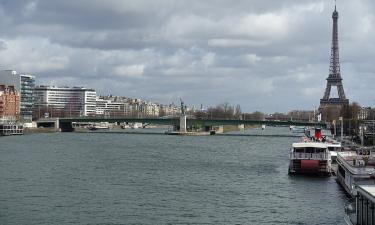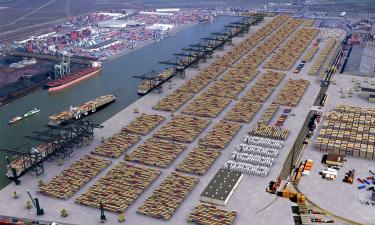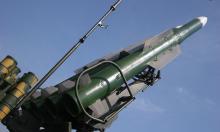Deflation’s Sword of Damocles and Golden Weeks of Pleasure
The first week of October brought agitation to the world's most populated nation: “the desire for change” gripped 80.7 million Chinese within the period of October 1-7, which at the same time made Chinese economic bosses very happy. The switching of China from a planned to a market economy liquidated any deficit in the stores. However, in the course of time, the unregulated boom stimulated by foreign investments entailed quite obvious overproduction. In response to a prospective threat to the national economy, an active financial policy was developed in China. This policy is to increase the purchasing capacity of the population with the expectation that people will buy more actively. At that, enterprises will be given a chance to keep on producing and guarantee safe employment to their employees.
Target government loans for the financing of construction works became the key instrument of the active financial policy, which allows millions of people to be employed and increases the number of consumers. This is the answer to the question asked by almost all foreigners visiting the country: How does China reform so quickly?
The policy itself slightly reminds one of Roosevelt’s method for overcoming the Great Depression applied in the 1930s. However, it is carried out on a greater scale in China: skyscrapers are rapidly being built, and more railways and highways appear. It is the infrastructure that is rapidly developing, not industrial enterprises: strict limits have been established in this sphere because of the abundance of goods.
One of the most powerful slogans in the mass media urges people to buy more, not deposit money in banks. For this very purpose, bank interests have been reduced to the minimum in China. Another innovation of the active financial policy is the "Golden Weeks of Active Consumption."
In former times, the Chinese had just few days off; however, it was decided quite recently to declare Saturday a day off. When the active financial policy was introduced, Chinese received three “golden weeks,” which are made by combining a holiday with two Saturdays and two Sundays: the traditional Spring Festival (Oriental New Year), May 1st, and National Day.
Official statistics reports that 100 leading tourist centers collected revenue of 37.9 million yuans (about 4.6 million USD) by selling entrance tickets within the period of October 1-7 this year. Sales of air and railway tickets yielded revenue of about 2.3 million yuans (270 million USD). Proceeds of the 140 leading Chinese trade centers exceeded 2.8 billion yuans (350 million USD) during the golden week.
Total spending of the Chinese population within the first week of October made up 30.6 billion yuans (or 3.8 billion USD). Recently, the total proceeds earned during the golden weeks within 2000 – 2002 were announced: 152, 5 billion yuans (18,4 billion USD).
The Chinese press is abundant in complaints of economists saying that people are too anxious to set aside money for a rainy day and that the price indices aren’t increasing and even slightly decreasing. China is even more afraid of deflation that of inflation.
This golden week in China is expected to cheer up economists who successfully apply market instruments to solve the problems caused by this very market economy.
Andrey Krushinsky PRAVDA.Ru Beijing China
Translated by Maria Gousseva
Read the original in Russian: https://www.pravda.ru/main/2002/10/10/48210.html
Related links:
Subscribe to Pravda.Ru Telegram channel, Facebook, RSS!





